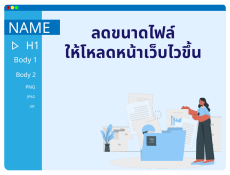
How to fix WordPress Posts showing 404 Error (step by step)
2025-03-31 11:28:36
Have you ever tried to open a post on WordPress and encountered a 404 Error page? This issue may occur when you can normally access the WordPress admin page, but when you open certain posts or web pages, you see the message "404 Not Found."

The reason WordPress Posts show a 404 Error
There are several reasons why your post might show a 404 Error, such as:
- Conflict between plugins or themes – The plugins or themes you are using may have issues with the permalink structure of WordPress.
- Custom Code has errors – If you add code to the website files, it may cause issues with permalinks.
- The .htaccess file has an issue – this file controls the URL structure of WordPress, and if it is damaged or deleted, it may cause 404 Errors.
How to fix WordPress posts that show a 404 error
1. Check for conflicts between plugins, themes, and added code.
Temporarily disable all plugins.
- Go to Plugins » Installed Plugins in the WordPress dashboard.
- Select Deactivate All and check if the post still shows a 404 Error.
- If the problem disappears, try enabling the plugins one by one to check which plugin is the cause.
Switch back to the default WordPress theme.
- Go to Appearance » Themes
- Choose a standard WordPress theme like Twenty Twenty-Four.
- Check if the post can be opened normally.
Check the added code.
If you have just added code to functions.php or used a code plugin like WPCode, try deleting or disabling it and check again.
2. Reset the Permalink Settings
The 404 Error issue may be caused by incorrect permalink settings. Follow these steps:
- Go to Settings » Permalinks
- Press the Save Changes button without changing any values.
- Try reloading the post page.
3. Edit the .htaccess file
If resetting the permalinks doesn't work, you may need to edit the .htaccess file manually:
Steps to edit .htaccess
- Use an FTP program like FileZilla or open the File Manager in your hosting.
- Go to the /public_html/ folder or the folder where WordPress is installed
- Search for the .htaccess file and back it up before making any changes.
- Open the .htaccess file and replace the existing code with this code:
# BEGIN WordPress
<IfModule mod_rewrite.c>
RewriteEngine On
RewriteBase /
RewriteRule ^index\.php$ - [L]
RewriteCond %{REQUEST_FILENAME} !-f
RewriteCond %{REQUEST_FILENAME} !-d
RewriteRule . /index.php [L]
</IfModule>
# END WordPress
- Save the file and then try opening the post again.
4. Contact the hosting provider
If you have tried all the methods above and still encounter a 404 Error, please contact your hosting provider as it may be a server-side issue.
5. Enable mod_rewrite (for Local Server)
If you are using a local server (MAMP, WAMP, XAMPP), you need to enable mod_rewrite in this way:
- Open the httpd.conf file of Apache
- Find this line: #LoadModule rewrite_module modules/mod_rewrite.so and remove the #
- Change AllowOverride None to AllowOverride All
- Save the file and then restart Apache.

If you encounter a 404 Error on a WordPress post, try the following methods:
- Disable plugins and themes to check for conflicts.
- Reset the permalinks settings.
- Edit the .htaccess file
- Contact the hosting service if the problem persists.
- Enable mod_rewrite if using a local server.
I hope this article helps you solve the problem quickly.
Leave a comment :
Recent post

2025-01-10 10:12:01

2024-05-31 03:06:49

2024-05-28 03:09:25
Tagscloud
Other interesting articles
There are many other interesting articles, try selecting them from below.

2024-03-25 03:46:48

2024-11-25 02:19:13

2023-10-03 01:55:58

2023-11-22 01:58:55

2024-11-06 11:24:26

2023-10-17 03:51:31

2024-10-18 01:18:22

2025-03-12 10:38:46

2025-03-26 02:54:59
